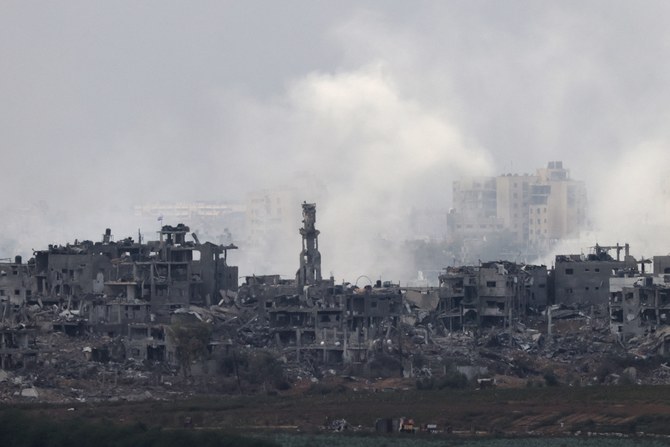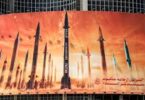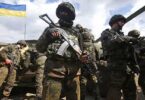Eyad Abu Shakra
It has been around a month and a half since the Oct. 7 operation in the Gaza Envelope; skepticism is increasing and the risks are accumulating. Setting to one side the bravado shown by Benjamin Netanyahu and his Defense Minister Yoav Gallant, who have talked about changing maps and claimed that what preceded Oct. 7 will not resemble what follows, as well as the puffery of some Hamas leaders regarding what happened, let us go over some of the facts.
Based on the dangerous strategic dimensions of this war and the explicit and unprecedented Western positions on it, I believe that any sensible analyst has come to feel that what we are seeing has exceeded the bounds of “legitimate self-defense,” a “surgical operation to rescue hostages,” revenge for Oct. 7 or even the elimination of an “ISIS-like group,” using another term for the terror group Daesh. As per international law, the right to self-defense does not allow for the deliberate targeting of residential buildings with missiles or forcing hundreds of thousands of people to choose between being forcibly displaced and dying under the rubble of homes, hospitals, schools, mosques or churches. And it certainly does not justify bombing the areas where these civilians were ordered to flee in the south of the Gaza Strip. Moreover, hostage rescue operations are supposed to be aimed at ensuring the safety of the hostages. Instead, we are hearing Israeli officials brazenly and haughtily talk about sacrificing them.
As for Hamas, I believe anyone with minimal familiarity realizes the following. One, it is a political movement whose leadership clearly has a Muslim Brotherhood background. It has openly engaged in both political and military action. It is not a murky and mysterious group like Daesh, which appears and disappears when needed. Two, over the years, Israel has assassinated several Hamas founders and leaders who had tried to engage in political action and move away from the targeting of civilians, most notably Sheikh Ahmed Yassin, Ismail Abu Shanab and Dr. Abdulaziz Al-Rantisi, while it has exiled or imprisoned others. Three, Israel, like the US, recognizes that there are several wings within Hamas. The Oct. 7 operation very clearly attests to this fact, as the leadership of Hamas and its Lebanese-Iranian ally Hezbollah have said that the plans were a closely guarded secret and that it was carried out without the majority of the movement’s leaders having advance knowledge of it. Four, regarding Hezbollah, several Western capitals have for years stressed the need to distinguish between the party’s political and military wings. The same applies to Hamas, especially since several of its leaders reside in countries that are friendly to the West.
For all these reasons, the claim that Hamas – regardless of one’s political stance on the movement and what happened on Oct. 7 – is a copy of Daesh is totally baseless. To believe it is to buy into obvious incitement by Israel’s ruling Likud party. Nevertheless, the Hamas leadership does bear some responsibility. It can be blamed for failing to make a proper assessment of its surroundings, succumbing to its ideological and organizational contradictions and being unable to define its priorities as an organization ready for genuine political engagement. The claim, for instance, that the organization is keen on preserving the Palestinian national identity and the unity of the Palestinian struggle becomes untenable when it contributes to splitting the ranks of the Palestinians and effectively separates the Gaza Strip from the West Bank. It is very bizarre that Hamas, a group that sprung from the Muslim Brotherhood, is standing against the Syrian popular uprising and supporting the oppressors of the Syrian people after Iran and Western capitals sought to “demonize” this uprising by linking it to the Brotherhood. Furthermore, from a purely sectarian standpoint, how can some wings of Hamas explain their stance on the Iranian leadership after all of the sectarian policies we have seen from the latter and its displacement and marginalization of Sunni communities in Iraq, Syria, Lebanon and Yemen?
Going back to the Israeli side of the disequilibrium, I believe one of the most dangerous repercussions of Oct. 7 might be the deeply harmful stances of actors who are supposedly capable of distinguishing between the insidious incitement to violence and the morally acceptable limits of diversity of opinion and political disagreement. The gravest and most hideous failing of many Western democracies, though not all of them, was in this regard. Making matters more painful, this did not suddenly emerge as a reaction to the Oct. 7 operation. Yes, the positions and statements we hear today from Western politicians, both senior and junior, and read in the media and on social media, do not seem to have arisen in the spur of the moment or come out of momentary shock. More and more, they are beginning to seem like part of a strategic course that began in December 1991 with the UN’s repeal of a previous General Assembly resolution (No. 3379) that asserted that Zionism is “a form of racism.” We have now almost reached a point where any criticism or opposition to the extremist right-wing and settler government in Israel is considered a form of antisemitism.
To my knowledge, this is unprecedented in Western democracies. Never before have leaders raced to appease the most extreme Israeli governments and engage in McCarthyistic restrictions on criticism of a bloody campaign that has killed more than 11,000 innocent civilians to date, branding it either as “support for terrorism” or “antisemitism.” In Middle Eastern popular culture, it is widely recognized that “one is well so long as his neighbor is well,” while our thinkers and writers have taught us that “those who go unpunished become insolent.” Last but not least, we learned from the West itself that “it takes two to tango.” My point here is that we cannot expect an individual or a group to expect to live in safety if their close neighbor is deprived of it.
How can one side of a conflict be deterred from committing injustice and tyranny when it enjoys unlimited external support? How can peace or coexistence arise if the stronger side in a conflict insists on refusing to acknowledge the existence of the other side and pursues the physical, demographic and geographic erasure of the other side to back its claim?







